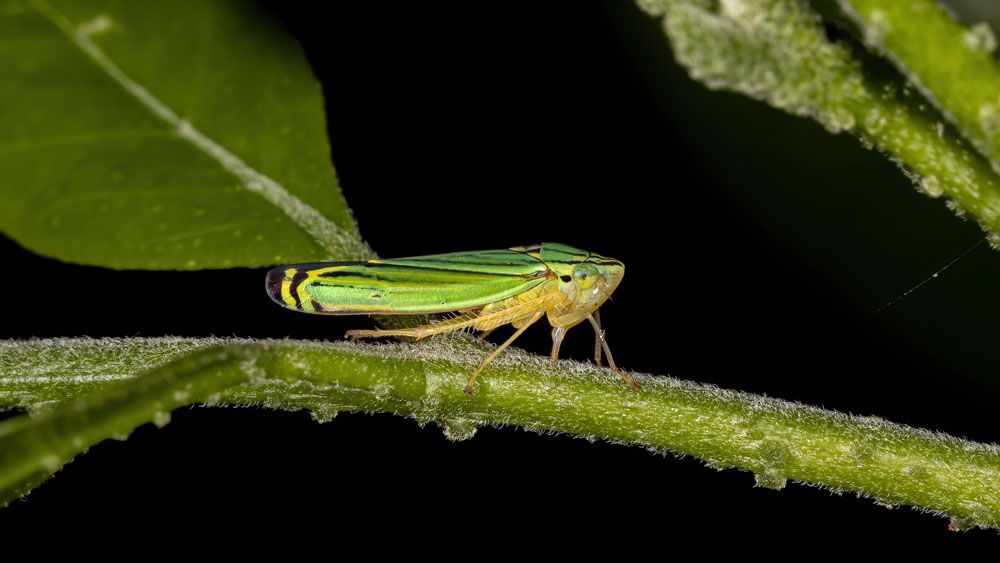
Green Sharpshooter – Draeculacephala fulgida
Green Sharpshooter: Appearance, Territory, Damage and Life
Latin name: Draeculacephala fulgida
Appearances: Compared to other leafhoppers, sharpshooters are bigger. Adults are dark brown to black in appearance and average 12 millimeters in length. Their face and legs are yellow-orange, and their wings have little red veins that appear to be brown in color. The nymphs have bodies that are extremely similar to those of adults, are grey, and lack wings.
Host plant: They favor watergrass, bermudagrass, Italian rye, perennial rye, and fescue as host plants. Green-headed sharpshooters feed and breed only in areas where bermudagrass grows. Grapes are incidental hosts of these grass-feeding sharpshooters
Territory: The green sharpshooter loves regions that receive regular irrigation, lush dairy pastures, and perennial grasses. Insects typically move east (downwind at dusk) from pastures, weedy hay fields, or other grassy regions in central California.
Damage insect caused: Sharpshooter feeding does not harm grapes, however these insects carry the bacterium that causes Pierce’s disease in grapes, Xylella fastidiosa. In coastal grape-growing regions, the blue-green sharpshooter is the most significant vector of Xylella fastidiosa; green, willow, and red-headed sharpshooters are also found. Sharpshooters inject the bacterium into the water-conducting system as they feed on vines, which causes the plant to experience water stress. Early spring infections may show symptoms by the fall of the year they were contracted, but this depends on the variety. Budbreak will be delayed or missing in the spring on vines that were infected the year before, and leaf scorch will start to emerge in the early summer and intensify during the fall, leading clusters to dry. Infections that are caught early in the season (March through May) have a higher chance of surviving the next winter and developing into chronic conditions. Vine death can occur 1 to 3 years following Xylella fastidiosa infection.
Life cycle and habits: Three generations are produced annually by the green- and red-headed sharpshooters. They lay eggs from late February to early March and spend the winter as adults. The second generation most likely migrate into the vineyard because overwintering adults do not live long. In masses of up to 28, females lay their eggs on the bottom leaf surface of newly developed juvenile leaves. The egg mass initially emerges on the leaf as a greenish blister. A fluid from the female that like white chalk covers the leaf blister, making it visible. The leaf tissue that held the egg mass soon after it hatches starts to become brown. A permanent brown scar is all that is left of the dead leaf tissue.
